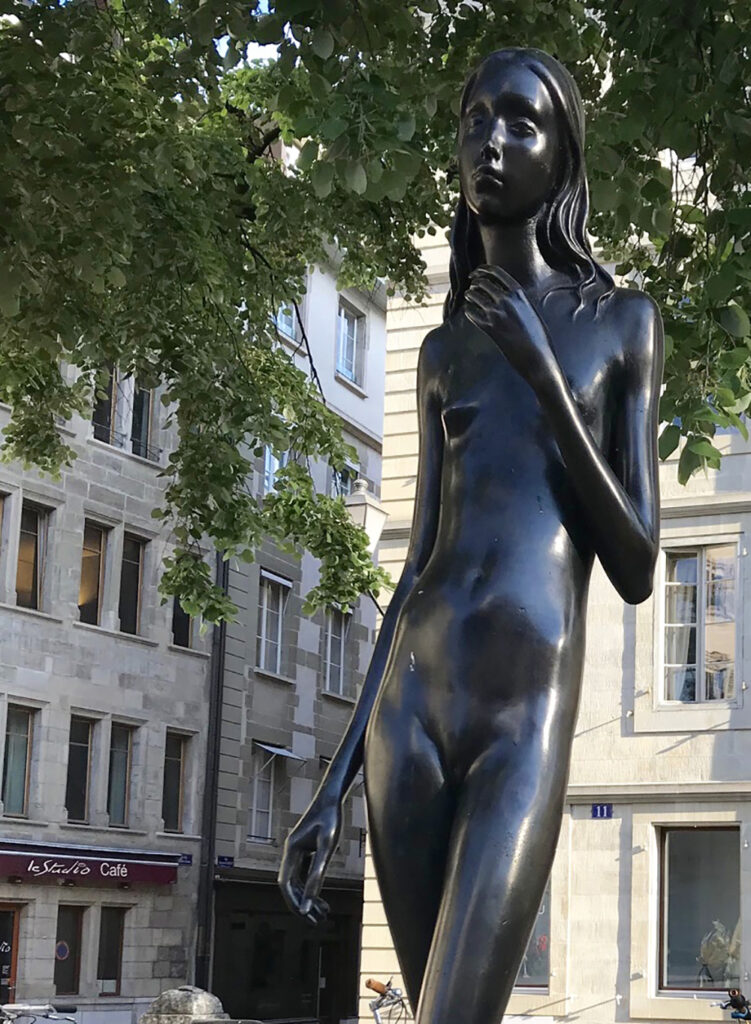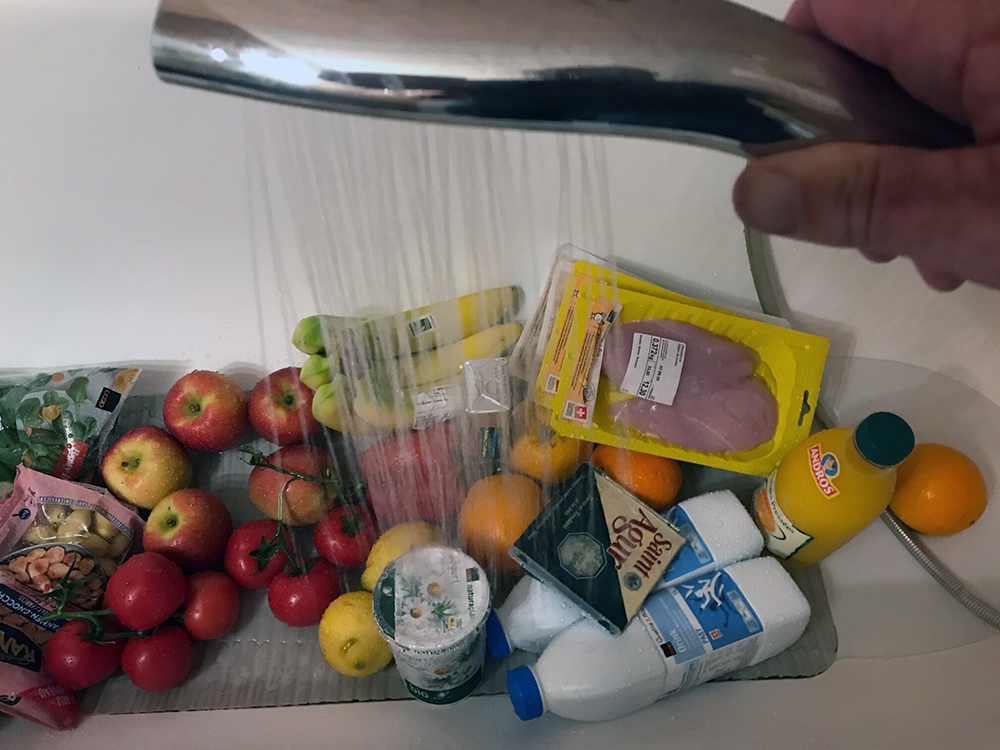Geneva, Friday 1 May 2020
A cold damp morning. I cycled into town; lots of people about given the weather. Shops are re-opening. I found myself in Place Bourg de Four; right in the middle of the old town. I had to say hello to “Clementine,” a bronze sculpture by Heinz Schwarz.

Clementine is exquisite. She is sad, delicate and beautiful in her budding adolescence. She stands fully and unashamedly naked. Schwartz’s masterpiece has become an international symbol of solidarity for women and girls, especially those trafficked or forced into prostitution. Outside the time of lockdown, there would be floral tributes strewn at her feet.
It is a shopping day. I was speaking to a friend by phone. I said that I hoped it wouldn’t be long before we no longer needed to rinse the groceries under a cold shower. He couldn’t believe I’d been doing this throughout the lockdown.

I thought it was kinda normal if one was concerned about a bug doing the rounds. That’s what we used to do “out there” on top of the standard “clean it, boil it or leave it.” I read somewhere that it is not a disinfectant measure (obviously) and may not reduce your chance of picking up the coronavirus; but, given that we talking about droplet spread, it can reduce the viral load ingested and so, theoretically, reduce the impact of the infection if you get it. Maybe one day soon, the stats will be there to tell me whether this is a valid precaution or not. Now, talking of stats….
I am fascinated by the evolution of how pertinent epidemiology stats are presented to the general public. Six weeks ago, the focus was on total cases and deaths per country. There was talk of us climbing to the epidemic peak and the need to “flatten the curve.” Now there are explanations of the R value that indicates how contagious the disease was and is now with lockdown measures. (In the beginning this value was around three meaning for every infected person, the virus would be passed on to three others. Effective lockdown measures aimed to and did pull this number to less than one where it has to stay.) There are also concerted attempts to establish the mortality associated with COVID-19 by comparing countries differing mortality rates. If this is not possible for a given country, it can be estimated by calculating the “excess mortality” within a population over the period in question. From what I can see on-line, we are likely to find that the mortality associated with the disease is between 2% and 4%. This pursuit of such figures is not an academic exercise. The more accurate our understanding of the R values and the factors behind the differing mortality rates, the better equipped governments will be to make the important decisions about loosening lockdown measures.
I am fascinated also – and horrified in equal measure – by President Trump’s unceasing accusations against China that the pandemic is the result of a leak – accidental or intentional – from a laboratory in Wuhan. He uses increasingly inflammatory language. His own intelligence agencies don’t believe this and have stated that the virus is most likely of natural origin. The UN Secretary General, Antonio Guterres, as politically deft as he is wise, has let us all know with well chosen words just how irresponsible it is to foment this spat at precisely the time that powerful nations should be leading the world in a coordinated response to the pandemic. Go, Toni!
Surgeon: “Well, I’ve got some good news and some bad news.” Patient: OK, Doc! Give me the bad news first.” Surgeon: “We’re going to have to amputate both your legs.” Patient: “Oh no! What’s the good news then?” Surgeon: “You see that gorgeous nurse over there…. I’ve got a date with her on Friday!”
